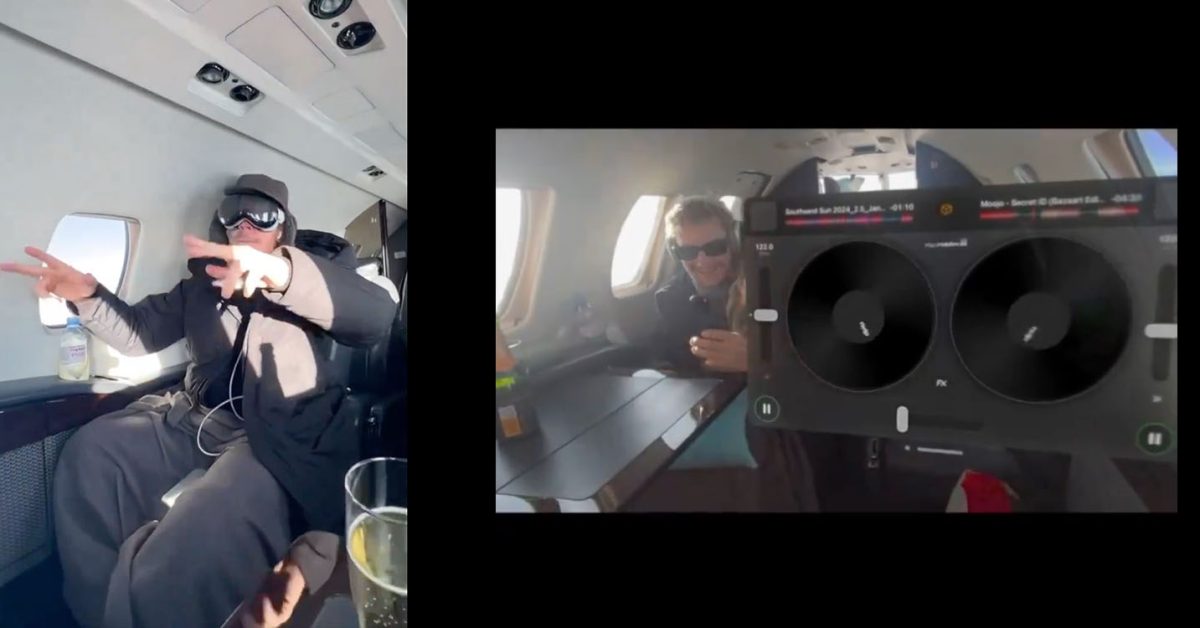
There’s been no shortage of Vision Pro stunts since the device was launched, like fake traffic stops. Celebrities have also been having fun with the facial spatial computer, including T-Pain, Diplo, and Casey Neistat.
But while this may all seem just some random silliness, one analyst suggests that this type of coverage is helping to normalise the device – something that never happened with Google Glass …
The glassholes phenomenon
One of the things which contributed to the failure of Google’s device was negative reactions to wearing them in public.
The biggest obstacle for Google to overcome is the backlash from the press and the general public. There are the bars/restaurants that preemptively ban Glass or the notion of them. There is the typical anti-Google press contingent that always seems to have a bad/scary thing to interject into any Glass news. And there are the people who distrust Google and their privacy treading ways.
In part, that may have been due to the invitation-only launch strategy, as Wired suggested, but whatever the reasons, it was certainly a major disincentive to buying them.
Glass is socially awkward. Again and again, I made people very uncomfortable. That made me very uncomfortable.
People get angry at Glass. They get angry at you for wearing Glass. They talk about you openly. It inspires the most aggressive of passive aggression. Bill Wasik refers apologetically to the Bluedouche principle. But nobody apologizes in real life. They just call you an asshole.
Wearing Glass separates you. It sets you apart from everyone else. It says you not only had $1,500 to plunk down to be part of the “explorer” program, but that Google deemed you special enough to warrant inclusion (not everyone who wanted Glass got it; you had to be selected). Glass is a class divide on your face.
Vision Pro, in contrast, makes people smile
There’s little doubt that wearing Vision Pro in the street makes you look pretty silly, and perhaps some people are laughing at, rather than smiling with, those who do it. But analyst Neil Cybart suggests that all of the silliness is helping to overcome any Glass-like hostility that might otherwise have been experienced.
He goes on:
Content creators, sensing opportunity with Vision Pro, then took to the streets. While the videos were staged as seen by the fake hand gestures, they were real in terms of relying on Vision Pro’s passthrough to walk around and be seen. These examples do play a role in building societal acceptance for Vision Pro in public.
9to5Mac’s Take
As venture capitalist John Frankel commented, it’s rather early to be drawing too many conclusions, as the Glass backlash came a little later in the product cycle.
But it is interesting that, even among those who think it’s silly to lay out this kind of cash, and even sillier to use the device in public, the prevailing public mood appears to be amusement rather than hostility.
Image: Diplo
FTC: We use income earning auto affiliate links. More.



![[CITYPNG.COM]White Google Play PlayStore Logo – 1500×1500](https://startupnews.fyi/wp-content/uploads/2025/08/CITYPNG.COMWhite-Google-Play-PlayStore-Logo-1500x1500-1-630x630.png)